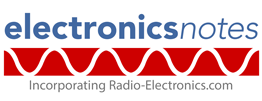Home » Component data » JFET data » this page
JFE150 JFET Data
Data for the JFE150 JFET including electrical parameters, maximum current and voltage, pin connections, package type and many other datasheet details.
The JFE150 is a Burr-Brown discrete JFET that has been fabricated using the higher performance analogue bipolar process from Texas Instruments.
The JFE150 features a high level of performance that cannot be obtained from older discrete JFET technologies.
The JFE150 offers the a very high level of noise-to-power efficiency and flexibility, and the quiescent current can be set by the design engineer.
The JFE150 provides excellent noise performance for current levels from 50 µA to 20 mA. When biased at 5 mA, the device yields 0.8 nV/√Hz of input-referred noise, giving ultra-low noise performance with extremely high input impedance (> 1 TΩ).
The JFE150 also features integrated diodes connected to separate clamp nodes to provide protection without the addition of high-leakage, nonlinear, external diodes.
These features make the JFE150 an ideal device where low current and low noise are needed - as such it is ideal for many very low noise audio circuit applications.
Key details and performance parameters for the JFE150 JFET.
| JFE150 JFET datasheet parameters & data |
|
|---|---|
| Parameters | Details |
| Brief description | Ultra-Low-Noise, Low-Gate-Current, Audio, N-Channel JFET |
| Package type | SOT-23-5 & SC70-5 |
| Channel type | N-channel |
| Drain to Source voltage VDSS | -40V to +40V |
| Gate drain voltage VGD | -40V to +0.9V |
| Gate to source voltage VGS | -40V to +0.9V |
| Maximum drain current continuous IDS | -50mA to +50mA |
| Drain-to-source saturation current IDSS | 24mA min, 35mA typ, 46mA max for VDS = 1-V and VGS = 0V |
| Gate-to-source, gate-to-drain current IGS, IGD | -20 to +20mA |
| Forward transconductance gm | 3S for IDS = 100µA 18S for LIDS = 2mA |
| Input capacitance | 8pF for VDS = 5V |
| TJ °C | -55°C to +150°C |
| PTOT mW | |
| Primary manufacturer | Texas Instruments |
Outlines & pinout:
Explanation of JFET parameters
| Parameter | Explanation |
|---|---|
| Operational mode | This details whether the FET is an enhancement or depletion mode |
| Channel type | The channel of the JFET can either be an N-type channel where electrons are the majority carriers or P-type where holes are the majority current carrier. |
| Drain to Source voltage VDSS | This is the maximum voltage that can be sustained between the drain and source |
| Gate to source voltage VGSS | This is the maximum voltage that can be sustained between the drain and the gate. |
| Maximum drain current continuous ID | This is the maximum current that can be carried byt he device. Sometimes there may be a differentiation between the continuous and pulsed or peak values |
| Parameter | Explanation |
|---|---|
| Zero gate voltage drain current IDSS | This is the current carried by the device when the gate voltage is zero. The test conditions are normally stated for this. |
| Gate threshold voltage VGS(th) | This is the minimum gate-to-source voltage, VGS required to create a conductive channel between the source and drain terminals |
| Static drain source ON resistance RDS(ON) | This is the resistance of the device when turned on. The test conditions of voltage and current are normally given for this. |
| Drain source ON voltage VDS(ON) | This is the voltage across the device when it is turned on. Again the test conditions are given. |
| Forward transconductance gFS | Forward transconductance also given the letters gm is defined as the change in drain current (ΔID) for a small change in the gate-source voltage ΔVGS, with the drain-source voltage, VDS held constant. |
These are the main JFET parameters that have been included in our list. There are others, but these are the main ones and they help quantify the main elements of the performance.
Please note, that the data given is the best estimate we can give within a tabulated summary of this nature. Parameters also vary between manufacturers. Electronics Notes cannot accept any responsibility for errors, inaccuracies, etc, although we do endevaour to ensure the data is as accurate as possible.
Notes and supplementary information
• Availability & sources
The JFE150 is available from a number of stockists and electronic component distributors many of which are given in the table below.
JFE150 Component Distributor, Stock and Pricing
• Further details
The JFE150 can withstand a high drain-to-source voltage of 40 V, as well as gate-to-source and gate-to-drain voltages down to –40 V.
The temperature range is specified from –40°C to +125°C. The device is offered in 5-pin SOT-23 and SC70 packages.
The part number for the SOT23-5 package is JFE150DBV and for the SC70, it is JFE150DCK.
• Typical applications
| Application Category | Key Use | JFE150 Feature Utilized |
|---|---|---|
| High-Fidelity Audio | Microphone Preamplifiers (Preamps) and Professional Audio Mixers | The ultra-low voltage noise 0.8 nV / √Hz at 1 kHz) ensures the weakest input signals are amplified without adding discernible hiss. |
| High-Impedance Sensing | Hydrophones (underwater acoustic sensors) and Condition Monitoring Sensors | Its extremely high input impedance 1 TΩ and low gate current ($\text{10 pA}$ max) prevent it from loading sensitive sensors. |
| Musical Instruments | Guitar and other Music Instrument Amplifiers and DJ Equipment | Used as the first, critical gain stage to ensure maximum clarity and dynamic range from high-impedance instrument pickups. |
| Integrated Amplification | Discrete JFET Front Ends in Op-Amp Circuits | Often paired with a bipolar op-amp to combine the JFET's low-noise, high-impedance input with the op-amp's flexible output and stability. |
• Notable features
The JFE150 distinguishes itself from older JFETs with several modern, high-performance features:
Achieves "Bipolar-Level" Noise Performance: Historically, Bipolar Junction Transistors (BJTs) excelled in low-noise applications at low source impedances, while JFETs were better for high-impedance, low-current sources. The JFE150 breaks this rule, delivering a voltage noise floor that rivals the best bipolar devices while keeping the high input impedance and low current noise characteristic of JFETs. This hybrid performance allows it to be used effectively across a much wider range of source impedances.
Features On-Chip Protection Diodes: Unlike many older discrete JFETs which require external diodes to protect the gate from voltage transients or static discharge, the JFE150 features integrated clamp diodes. These diodes are connected to separate clamp nodes, providing necessary protection without introducing the high-leakage or non-linear effects that external diodes often cause in ultra-low-noise circuits.
Performance is Optimized by Modern Silicon Processing: The JFE150 is a modern JFET built using Texas Instruments' analog bipolar process (originally Burr-Brown technology). This newer manufacturing approach results in performance characteristics—such as the low noise and tightly controlled parameters—that were simply not achievable with older, discrete JFET fabrication techniques.
Exceptionally Tight Vgs(off) Specification: The Gate-to-Source Cutoff Voltage (VGS(off)) is the key parameter for biasing a JFET. Older JFETs often had VGS(off) values that varied widely (a range of −3V to −10V is common for some series). The JFE150 is noteworthy for having an extremely tightly specified cutoff voltage range (e.g., typically -0.9 V to -1.5 V), which significantly simplifies circuit design by reducing the need for device-by-device selection (known as "binning" or "matching").
 Written by Ian Poole .
Written by Ian Poole .
Experienced electronics engineer and author.
Return to Component Data menu . . .




